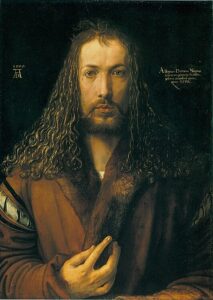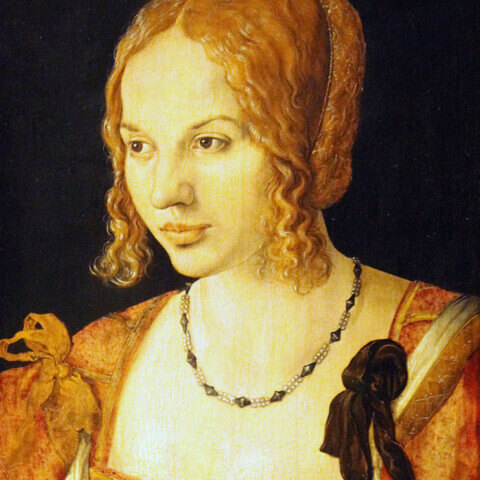Albrecht Dürer

Albrecht Dürer (1471–1528) was a seminal figure in the Northern Renaissance who left an indelible mark on the history of art through his intricate and detailed works in painting, printmaking, and drawing. Born on May 21, 1471, in Nuremberg, Germany, he was the third of eighteen children. Dürer’s father, a successful goldsmith, initially trained him in the family trade, but it quickly became apparent that the young Dürer’s talents were more suited to art.
In 1486, Dürer became an apprentice to the painter and woodcut illustrator Michael Wolgemut, where he learned the fine points of painting and printmaking. In 1490, after completing his apprenticeship, Dürer embarked on a period of travel often referred to as his “wanderjahre” or “journeyman years,” during which he spent time in various parts of Europe, including Italy, where he was deeply influenced by the Italian Renaissance.
Dürer was a highly innovative artist and was particularly celebrated for his skill and inventiveness in printmaking, using both woodcut and engraving techniques. His series of woodcuts, “The Apocalypse” (1498), brought him fame across Europe, while his copper engravings such as “Knight, Death, and the Devil” (1513), “Saint Jerome in his Study” (1514), and “Melencolia I” (1514) showcase his mastery of detail and composition.
In addition to his mastery in printmaking, Dürer was an accomplished painter. His self-portraits, like “Self-Portrait at 28” (1500), often seen as a representation of Christ, reflect his exploration of individuality and the human spirit. His other notable works, including “The Four Apostles” (1526) and “Feast of the Rosary” (1506), also demonstrate his talent as a painter.
Dürer’s body of work includes not only prints and paintings, but also significant contributions to mathematics, geometry, and art theory. His four books on human proportions, collectively known as “Four Books on Measurement” (1525), were pioneering works on the mathematical principles of art.
Albrecht Dürer died in his hometown of Nuremberg on April 6, 1528. His legacy as one of the most important figures of the Northern Renaissance endures, and his innovative techniques and expressive style continue to influence artists today. Dürer was an artist who truly bridged the gap between the Middle Ages and the Renaissance, and his influence can still be seen in the world of art centuries after his death.
- 1
- 2

